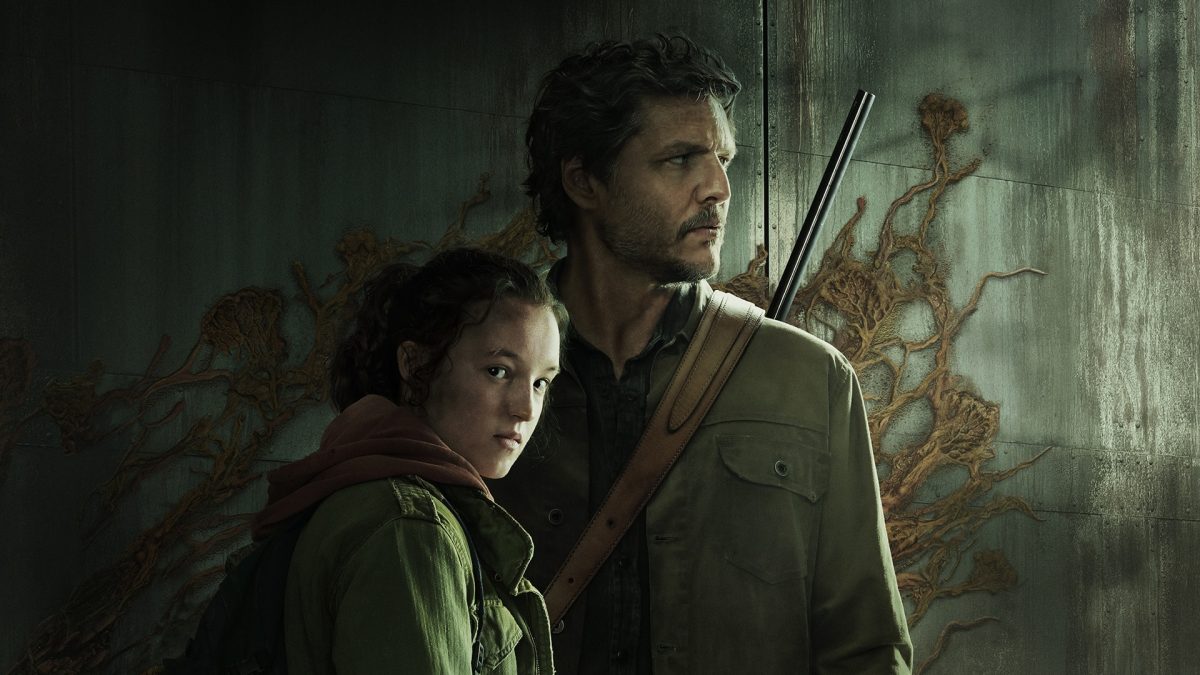At the start of the year, HBO Max’s release of post-apocalyptic drama series “The Last of Us” took the internet by storm, earning a rating of a whopping 96% on Rotten Tomatoes and setting records at HBO for the amount of viewers watching.
The first season of the TV-adaptation of Naughty Dog’s 2013 video game franchise honed in on the impactful story-telling and gruesome visuals originally introduced in the game. The nine-episode long series expands upon the themes and character relationships present in the action-adventure video game.
Turning the game into a show allowed for the creators Neil Druckman and Craig Mazin to dive deeper and fully explore the concepts and complex story line introduced in the game.
The audience navigates the trials and tribulations of a civilization ravaged by fungus-infected zombies alongside the aging survivor Joel Miller, portrayed by Pedro Pascal, and the young, witty Ellie Williams, played by Bella Ramsey.
Joel becomes tasked with protecting Ellie on their quest across the country as he learns of her immunity to the infected, and during the expedition, the duo grows close and learns to trust one another, forming a bond that transforms their journey. The two become somewhat of a father-daughter pair that the audience cannot help but love.
Viewers get to watch the characters evolve in the face of loss and humanity. The show focuses on the growth they experience throughout the story as they fight not only for their survival, but the survival of humankind, and maneuver a society 20 years overrun. They endure life-changing situations on their journey that makes for a devastating watch that, despite the long episodes, will have you entertained every minute of it.
The show’s compelling script creates a moving experience for viewers, while the cinematography uses a combination of calculated color palettes and lighting throughout the series to convey emotions. It utilizes a natural, loose camerawork style to create the illusion of game play in tense scenes with things like sprinting or shooting.
The show caters to both those who have seen the video game and those who have never heard of it.
“TLOU” spends ample time introducing characters and fleshing out plot points, so for first-time fans, it is easy to follow along and get just as absorbed in it. For viewers who are familiar with “TLOU” prior to watching, many of the scenes in the show are identical to the game. This makes for fun easter eggs and comparisons for seasoned fans, while giving a unique viewing experience to new watchers.
Video game adaptations can be hard to get right, because not only do you have to please fans and keep some of the original charm, but you also have to add a new spin to an already-loved piece of media to make it new and still attract an array of old and new viewers; this is something that “TLOU” did right.
The next season is expected to be using the second game as a guideline for its story and characters. As for the future plans of the show, production of season 2 can now begin following the end of the SAG-AFTRA actor’s strike and the WGA writer’s strike.
“I think it’s becoming essentially a near certainty that we won’t be able to start [filming] when we were hoping to start, which is upsetting. We are all raring to go. This is what we are born to do.,” shared co-creator Craig Mazin on the delay of the highly-anticipated second season.
“We’ve outlined all of Season 2 and we’re ready to go as soon as the strike ends.”




